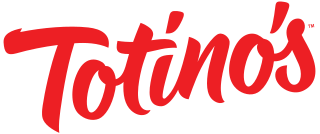
General Mills, Inc., is an American multinational manufacturer and marketer of branded processed consumer foods sold through retail stores. Founded on the banks of the Mississippi River at Saint Anthony Falls in Minneapolis, the company originally gained fame for being a large flour miller. Today, the company markets many well-known North American brands, including Gold Medal flour, Annie's Homegrown, Lärabar, Cascadian Farm, Betty Crocker, Yoplait, Nature Valley, Totino's, Pillsbury, Old El Paso, Häagen-Dazs, as well as breakfast cereals under the General Mills name, including Cheerios, Wheaties, Chex, Lucky Charms, Trix, Cocoa Puffs and Count Chocula and the other monster cereals.

The J.M. Smucker Company, also known as Smuckers, is an American manufacturer of food and beverage products. Headquartered in Orrville, Ohio, the company was founded in 1897 as a maker of apple butter. J.M. Smucker currently has three major business units: consumer foods, pet foods, and coffee. Its flagship brand, Smucker's, produces fruit preserves, peanut butter, syrups, frozen crustless sandwiches, and ice cream toppings.

Häagen-Dazs is an American ice cream brand, established by Reuben and Rose Mattus in The Bronx, New York, in 1960. Starting with only three flavors: vanilla, chocolate, and coffee, the company opened its first retail store in Brooklyn, New York, on November 15, 1976. The Pillsbury food conglomerate bought Häagen-Dazs in 1983, and now the brand is sold worldwide, as cartons, ice cream bars, ice cream cakes, sorbet, frozen yogurt, and gelato.

Ralston Purina Company was a St. Louis, Missouri,–based American conglomerate with substantial holdings in animal feed, food, pet food, consumer products, and entertainment. On December 12, 2001, it merged with Swiss food-giant Nestlé's Friskies division to form Nestlé Purina PetCare Company.
Martha White is an American brand of flour, cornmeal, cornbread mixes, cake mixes, muffin mixes, and similar products.

A sealed crustless sandwich consists of a filling between two layers of crimp-sealed bread, with the crust removed.

Godfather's Pizza is an American privately owned restaurant chain headquartered in Omaha, Nebraska, that operates fast casual Italian franchises and pizza express locations.

Totino's and Jeno's are brands of frozen pizza products owned by General Mills.

Dreyer's Grand Ice Cream, Inc. ("Dreyer's"), is an American ice cream company, founded in 1928 in Oakland, California, where its present-day headquarters office remains. The company's two signature brands, Dreyer's Grand Ice Cream and Edy's Grand Ice Cream, are named after its founders, William Dreyer and Joseph Edy. The Dreyer's brand is sold in the Western United States and Texas, while the Edy's brand is sold in the Eastern and Midwestern United States.
Eagle Family Foods Group LLC, doing business as Eagle Foods, is an American food company based in Cleveland, Ohio. The company was founded in 2015 by Paul Smucker Wagstaff after acquiring ownership of the Borden canned milk brands.
Reuben and Rose Mattus were Polish-Jewish entrepreneurs who founded the Häagen-Dazs ice cream business in the United States.

DiGiorno is a brand of frozen pizzas sold in the United States, and is a subsidiary of Nestlé. In 2023, Nestle discontinued sales of Delissio pizzas in Canada.

The study of the history of marketing, as a discipline, is meaningful because it helps to define the baselines upon which change can be recognised and understand how the discipline evolves in response to those changes. The practice of marketing has been known for millennia, but the term "marketing" used to describe commercial activities assisting the buying and selling of products or services came into popular use in the late nineteenth century. The study of the history of marketing as an academic field emerged in the early twentieth century.

Pet, Inc. was an American company that was the first to commercially produce evaporated milk as a shelf-stable consumer product with its "PET Milk" brand. While evaporated milk was popular before refrigerators were common in homes, sales peaked in the 1950s and it is now a niche product used in baking and as a cooking ingredient.

Paul Steven Walsh is an English businessman who is the executive chairman of the McLaren Group. He was the chief executive of Diageo, the world's largest whisky company, for twelve years between 2000 and 2013.

Brynwood Partners is an American private equity investment firm focused on leveraged buyout and other control investments.

A baking mix is a mixed formulation of ingredients used for the cooking of baked goods. Baking mixes may be commercially manufactured or homemade. Baking mixes that cater to particular dietary needs, such as vegan, gluten-free, or kosher baking mixes, can be bought in many places.

B&G Foods, Inc. is an American branded foods holding company based in Parsippany, New Jersey. The company was formed in 1996 to acquire Bloch & Guggenheimer, a Manhattan-based producer of pickles, relish and condiments which had been founded in 1889.
Mark Timothy Smucker is an American businessman who has been the president and CEO of The J.M. Smucker Company since May 2016. He is the fifth-generation member of the Smucker family to lead the business, a now publicly traded Fortune 500 company encompassing coffee, packaged food, and pet food, headquartered in Orrville, Ohio.






















